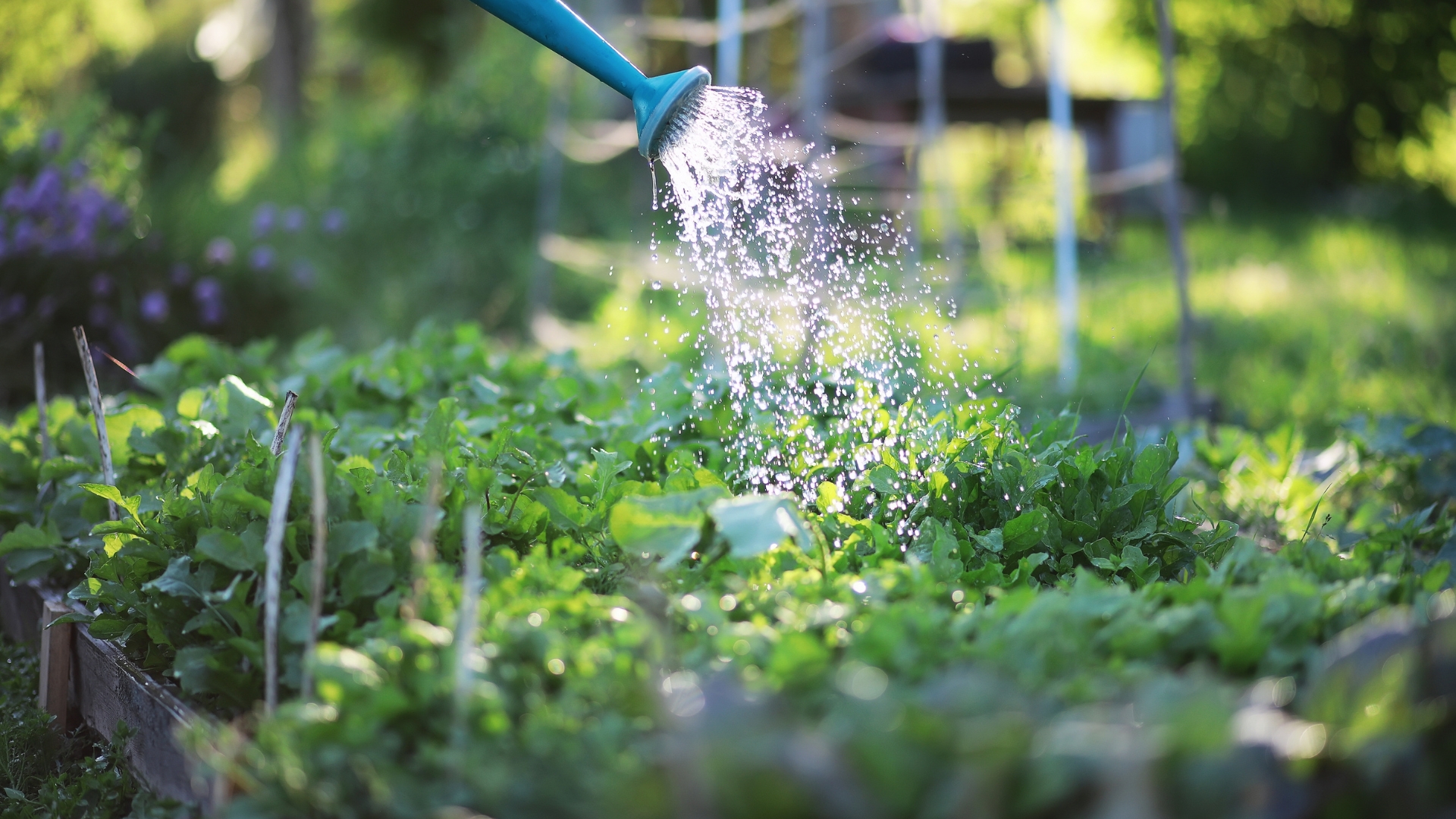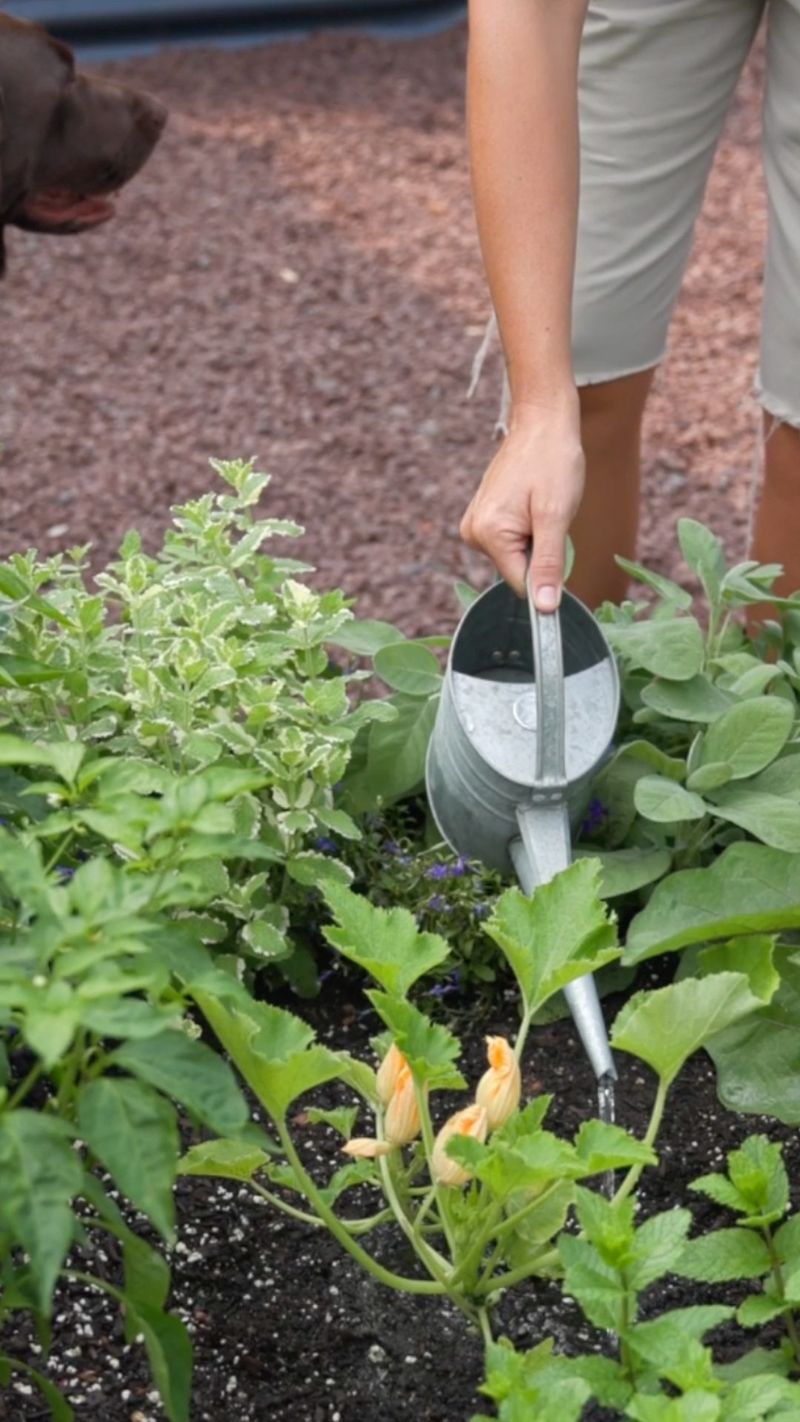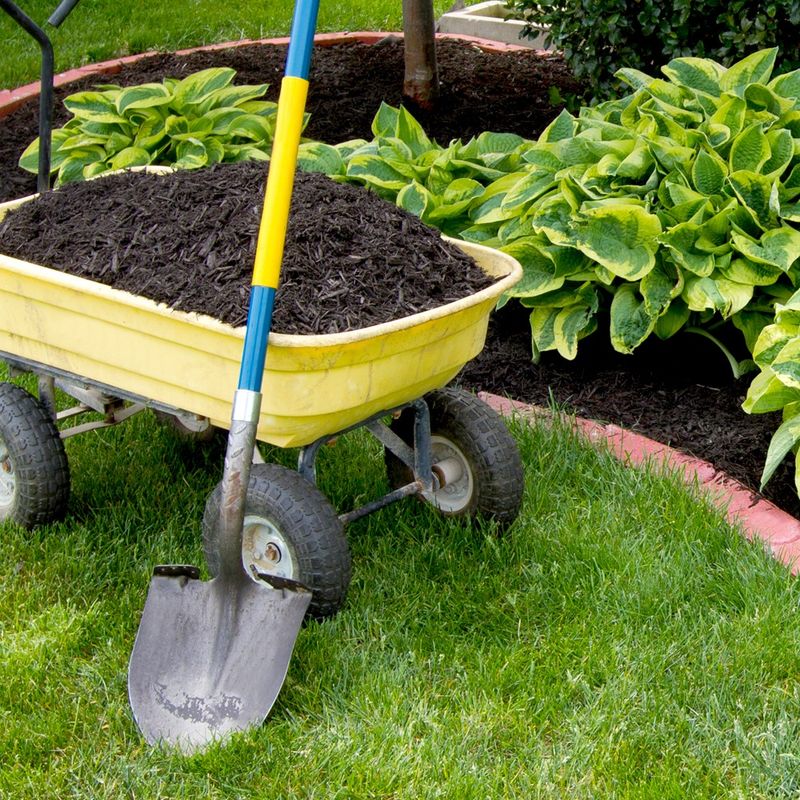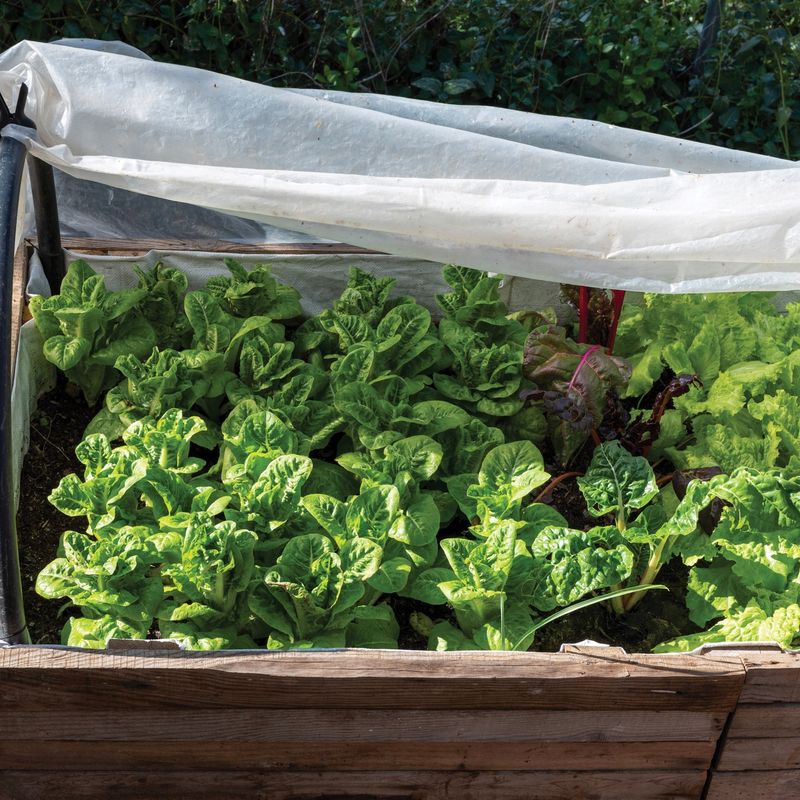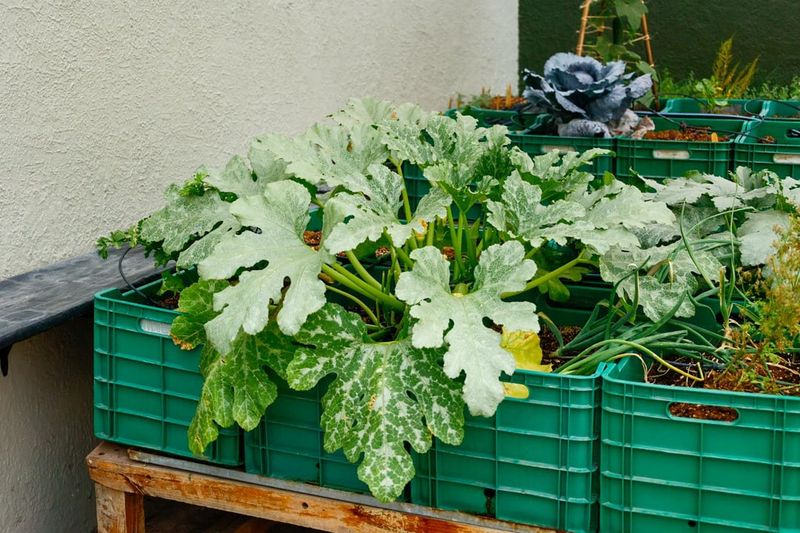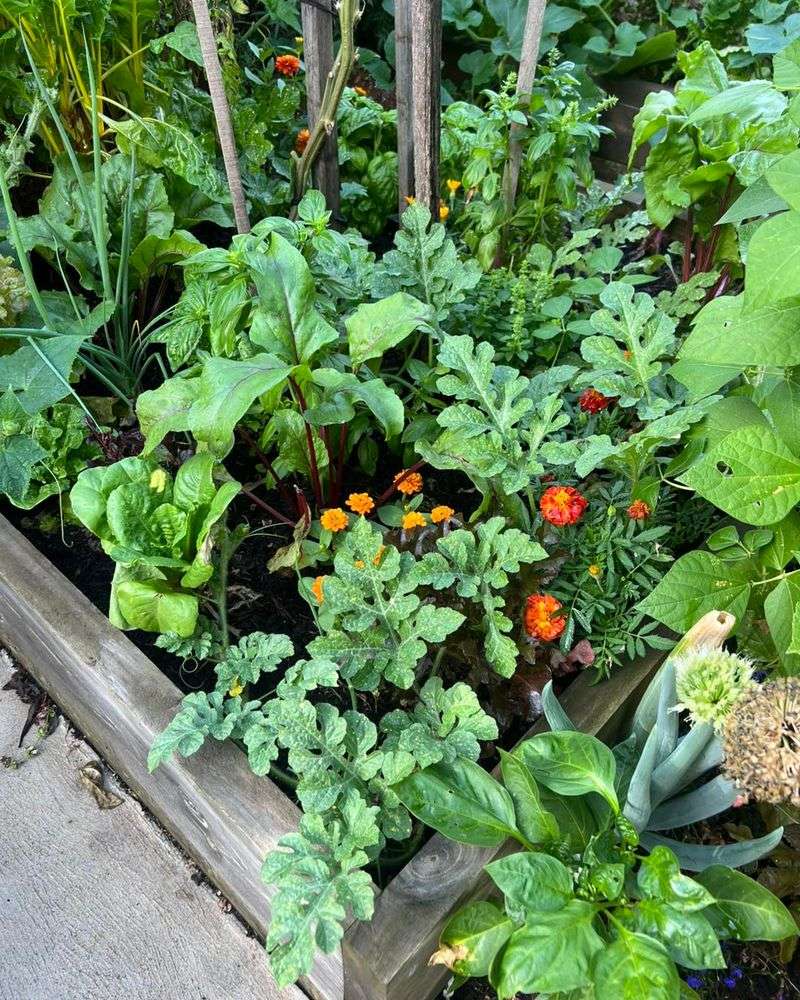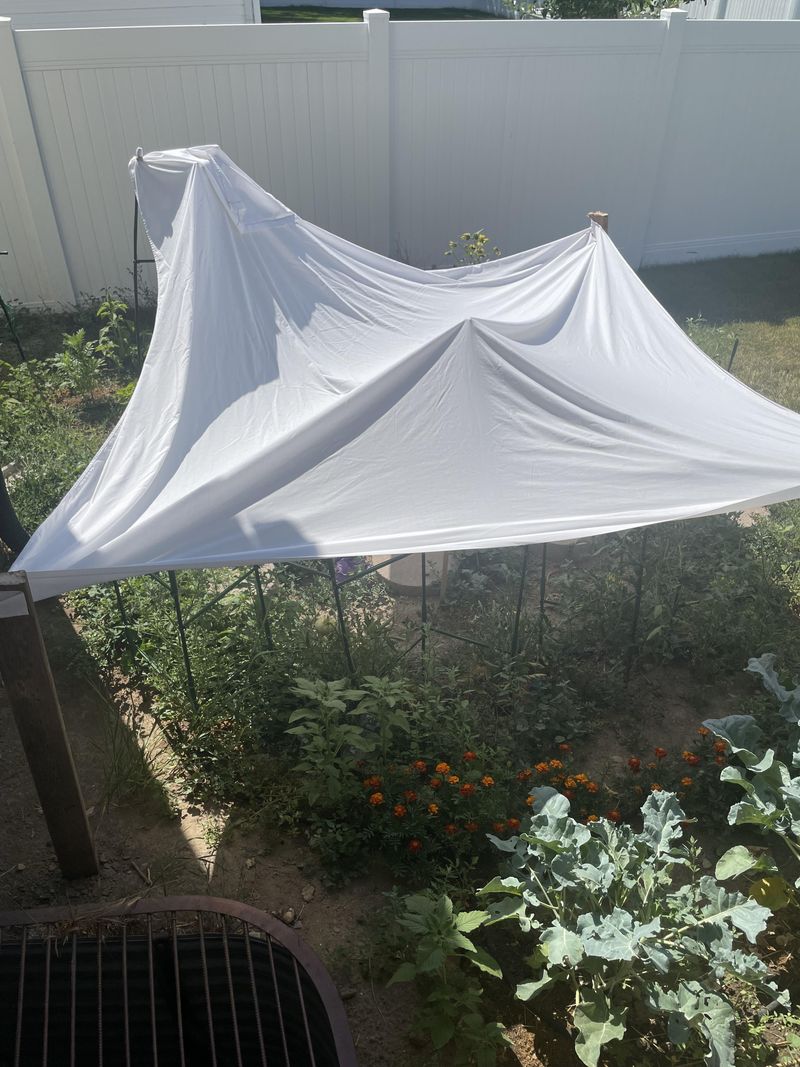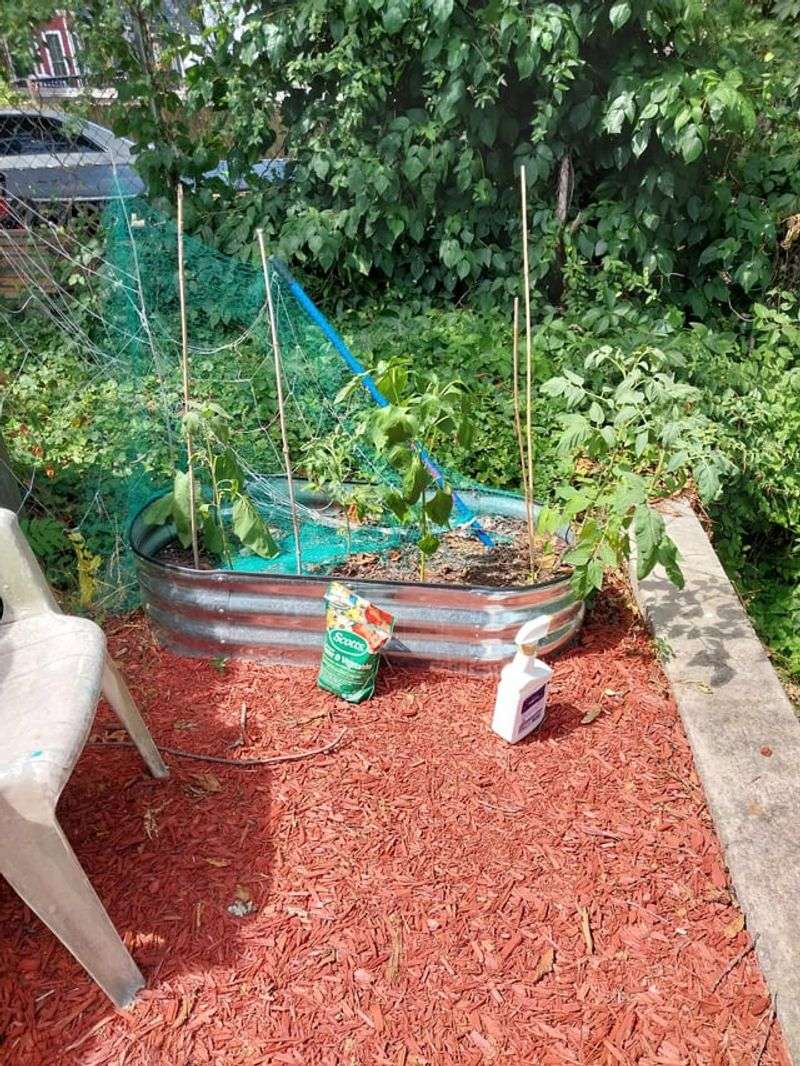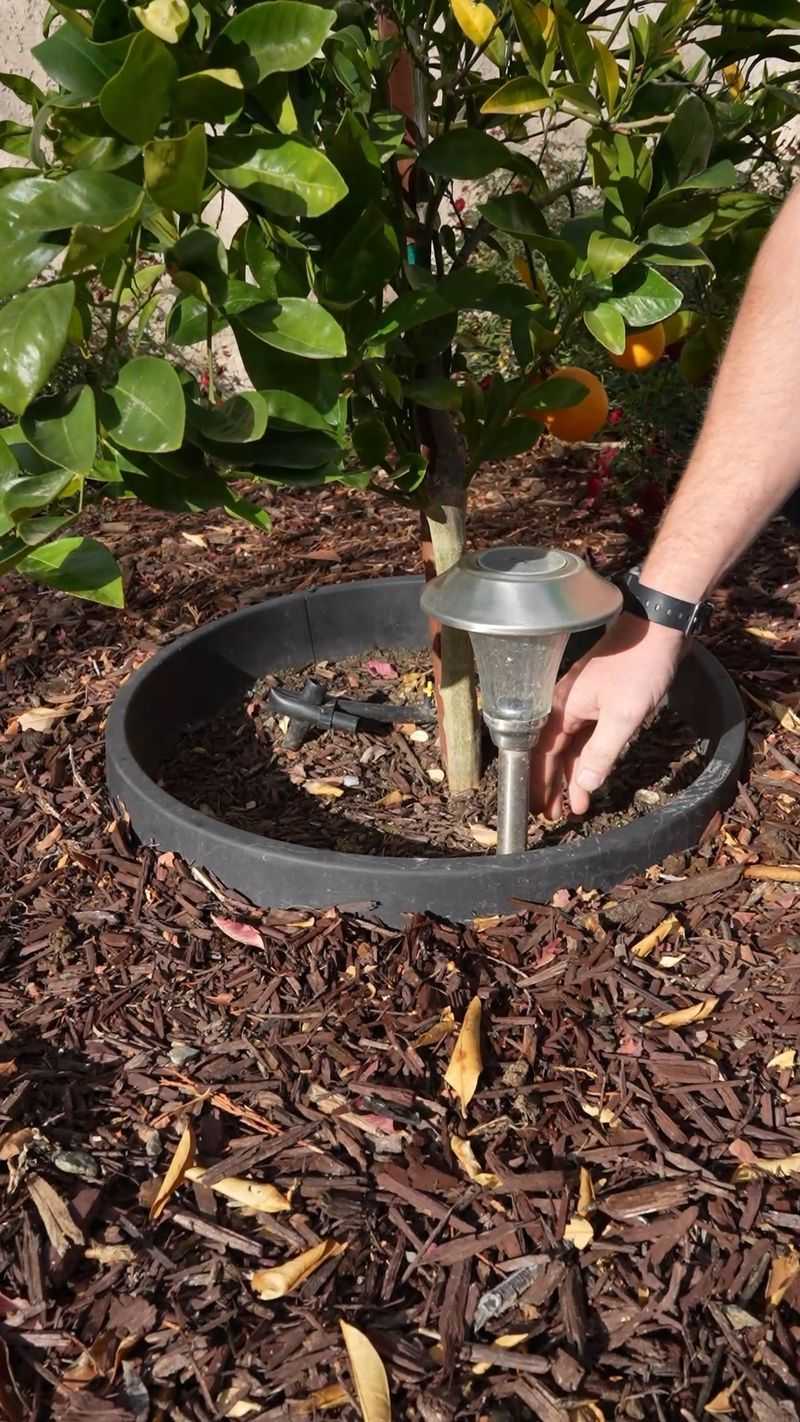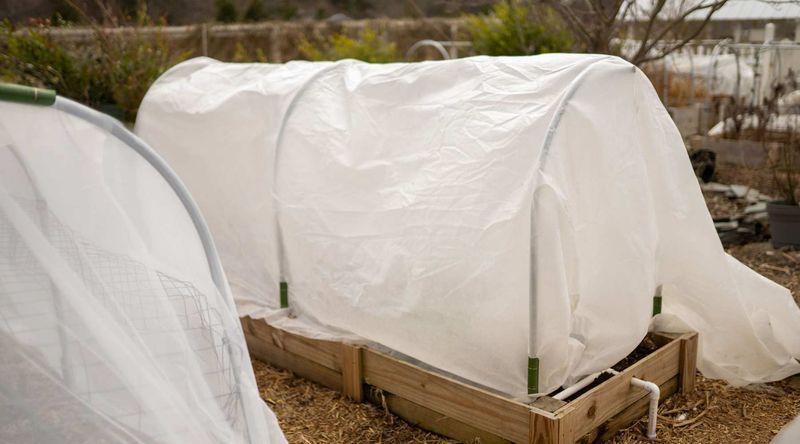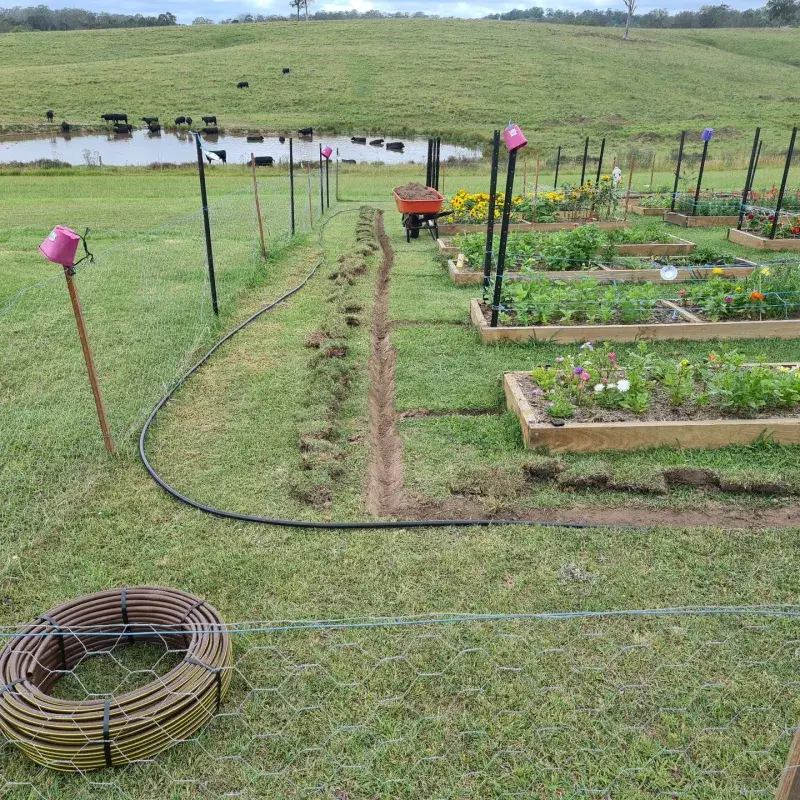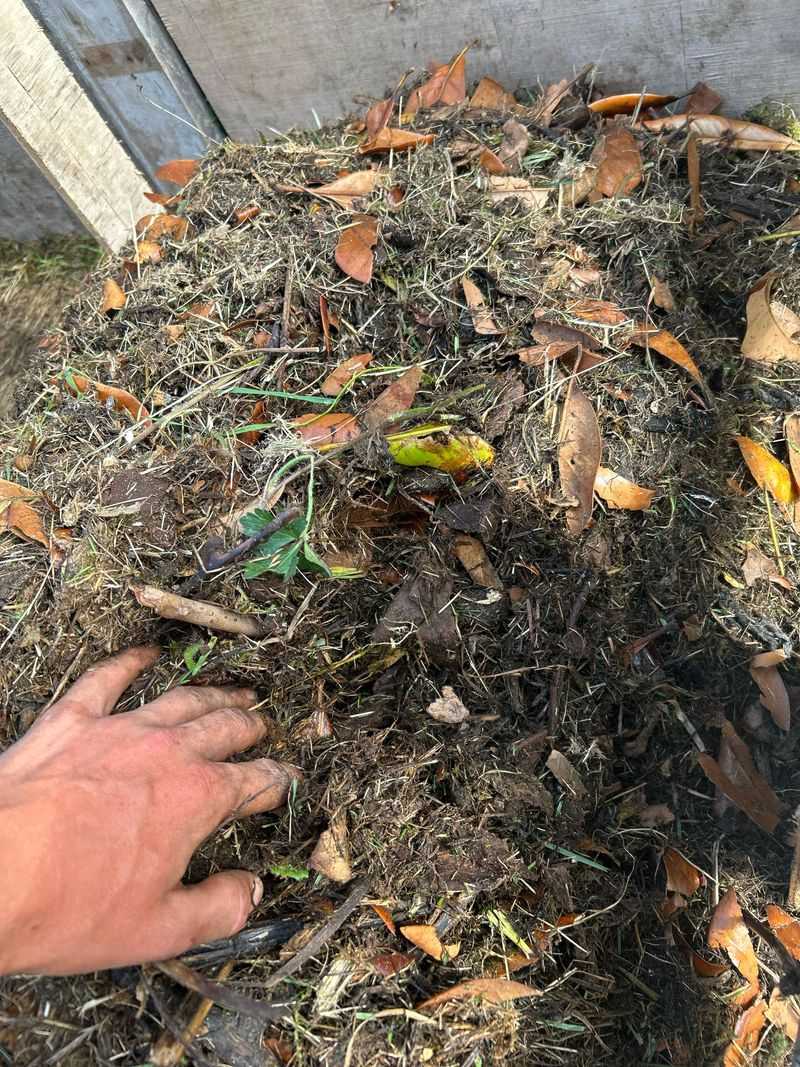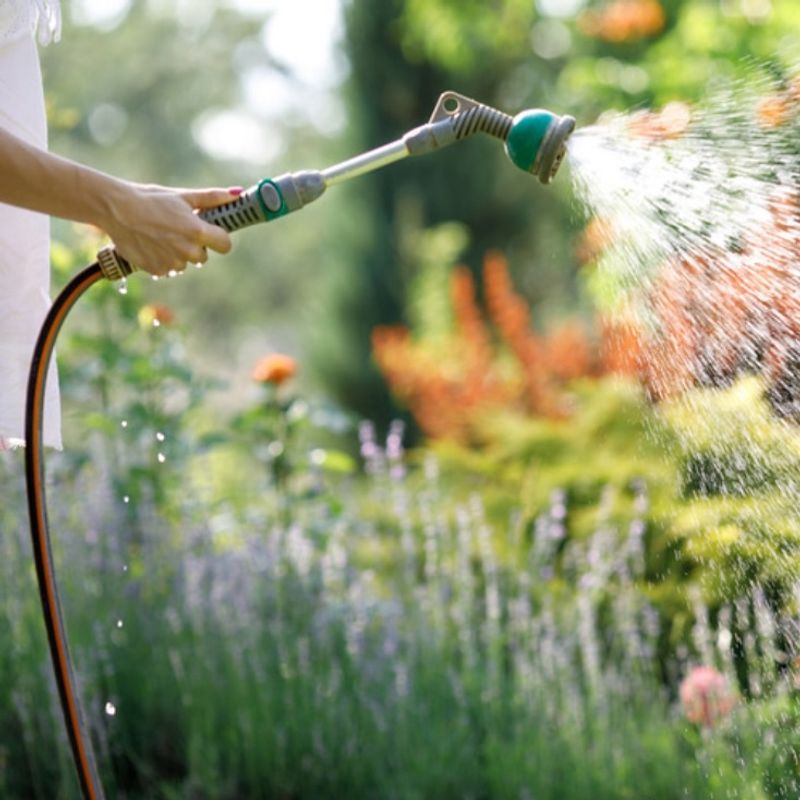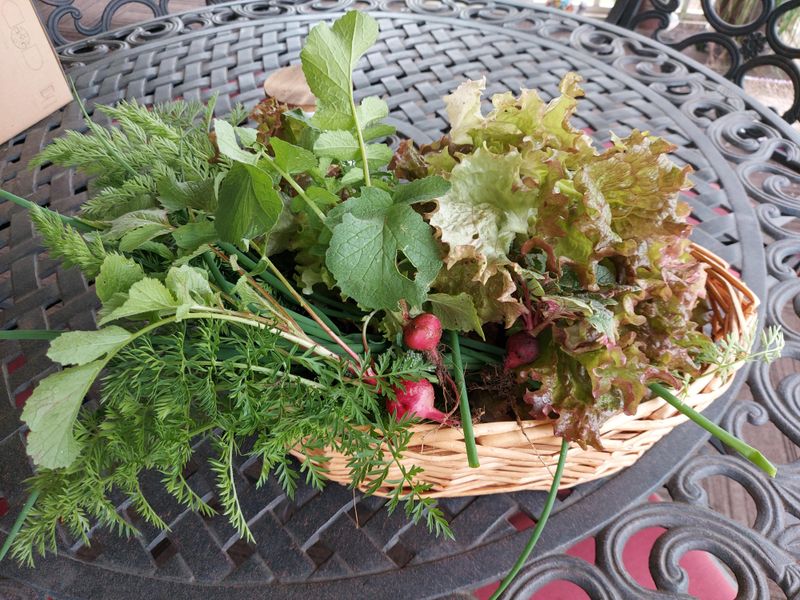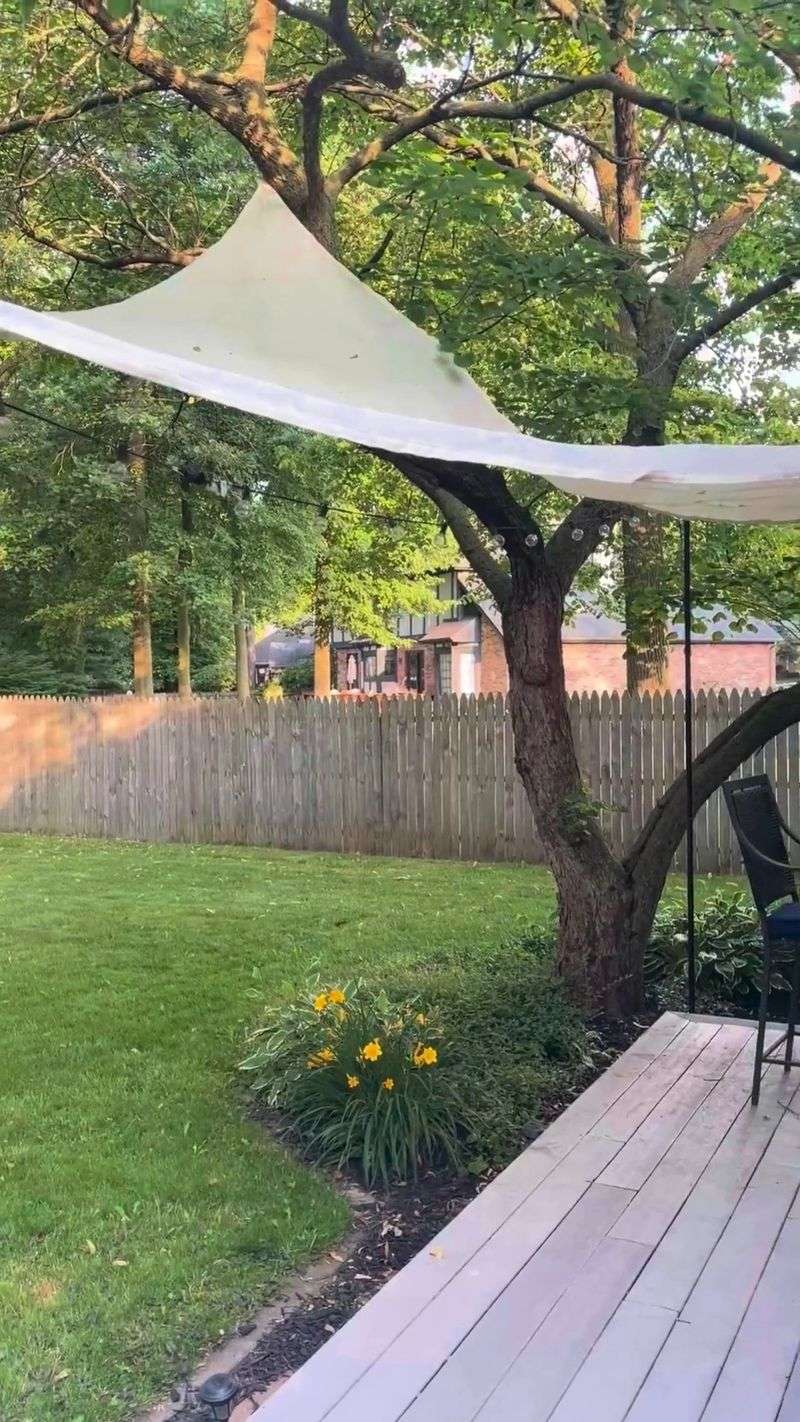Hot days can be brutal on garden veggies, and watching them wilt is the last thing any gardener wants. But with a few smart moves, it’s totally possible to keep them thriving through the heat.
From clever watering tricks to a little well-placed shade, these tips can make a big difference. Your veggies work hard—so give them a little extra love when temperatures soar.
Here’s how to help them stay crisp, happy, and ready to harvest.
1. Morning Watering
Early dawn watering gives plants the moisture they need before the day heats up. This timing allows roots to absorb water while temperatures are cooler, preparing them for afternoon stress.
Aim the water at the base of plants rather than leaves to reduce evaporation and fungal issues. A deep soak every other day is far better than daily light sprinkles that barely penetrate the soil surface.
2. Mulch Application
A thick layer of organic mulch works like a protective blanket for your soil. Straw, wood chips, or shredded leaves can lower soil temperature by up to 10 degrees while holding moisture where roots need it most.
Apply 2-3 inches around plants, keeping it slightly away from stems to prevent rot. The darker the days get, the more grateful your vegetables will be for this simple yet effective barrier against heat stress.
3. Shade Cloth Installation
Protective shade cloth creates artificial shade when natural tree cover isn’t available. Look for 30-50% light reduction fabric for most vegetables – enough to block intense rays without depriving plants of needed sunlight.
Mount the cloth on hoops or stakes positioned about 1-2 feet above plants for proper airflow. This simple structure can reduce leaf temperature by up to 20 degrees during peak heat hours while still allowing essential light through.
4. Container Relocation
Potted vegetables have a secret advantage during heatwaves – mobility! Move containers to morning-sun locations that receive afternoon shade when heat is most intense. East-facing spots work wonderfully for this strategy.
Consider placing wheeled platforms under larger pots for easier movement. Remember that container soil dries out faster than ground soil, so check moisture levels twice daily during extreme heat events.
5. Strategic Companion Planting
Tall, heat-tolerant plants can create natural shade for more sensitive vegetables. Plant sunflowers or trellised cucumbers on the west side of lettuce or spinach to block afternoon sun when temperatures peak.
This living shade system improves overall garden resilience while maximizing space. The taller plants actually thrive in the heat while creating a microclimate that protects their more delicate neighbors from the worst of the sun’s intensity.
6. Wind Break Creation
Hot, dry winds can dehydrate plants faster than sunshine alone. Temporary burlap screens or permanent hedge plantings block desiccating breezes while still allowing air circulation that prevents fungal issues.
Position barriers on the prevailing wind side of your garden, typically the west or southwest. During extreme heat events, even a simple row of staked burlap can significantly reduce moisture loss from both soil and leaf surfaces.
7. Evening Misting
A gentle mist over plants in the evening helps recover from daytime heat stress. This light spraying cools leaf surfaces and increases overnight humidity around plants without promoting disease.
Use a hose attachment that creates fine droplets rather than heavy spray. The water evaporates from leaf surfaces overnight, creating a cooling effect similar to how sweating cools our bodies during hot weather.
8. Deep Root Watering
Buried perforated pipes or commercial watering spikes deliver moisture directly to root zones. This targeted approach encourages deeper root growth while using less water than surface methods.
For a DIY option, bury plastic bottles with small holes punched in them next to plants. Fill these reservoirs every few days to slowly release water where it’s needed most, encouraging plants to develop heat-resistant deep root systems.
9. Reflective Mulch
White or silver reflective mulch bounces heat away from soil while conserving moisture. Commercial reflective films or even light-colored straw can significantly reduce soil temperature compared to bare ground or dark mulches.
This technique works particularly well for heat-sensitive crops like lettuce and spinach. The reflected light also reaches more leaf surfaces, improving photosynthesis efficiency while reducing direct soil heating.
10. Temporary Tunnels
Lightweight row covers draped over simple hoops create protective tunnels for vulnerable crops. Unlike winter tunnels that trap heat, summer versions use breathable materials that provide shade while allowing airflow.
Secure the edges with rocks or soil to prevent wind lift. These tunnels work exceptionally well for leafy greens and other cool-season crops that would otherwise bolt or wilt during hot weather.
11. Self-Watering Systems
Automated irrigation delivers consistent moisture even during vacation absences. Drip systems or soaker hoses connected to timers ensure plants never experience the double stress of heat and drought.
Program watering for early morning hours when evaporation is minimal. The peace of mind these systems provide is worth the initial setup cost, especially during unpredictable summer heat spells when consistent watering becomes critical.
12. Compost Boosting
Nutrient-rich soil helps plants withstand heat stress better than poor soil. A mid-season compost application provides energy for plants to repair heat damage and continue producing.
Gently work an inch of finished compost around plants without disturbing roots. The organic matter improves both water retention and drainage while feeding beneficial soil microbes that help plants access nutrients during stressful conditions.
13. Nighttime Watering
Occasionally watering after sunset helps plants recover from extreme heat days. The moisture remains available longer without sun-driven evaporation, allowing plants to fully rehydrate overnight.
Use this technique sparingly to avoid creating damp conditions that promote fungal diseases. For maximum benefit, combine with daytime shade strategies rather than relying solely on evening watering to combat heat stress.
14. Harvest Timing Adjustment
Picking vegetables early in the morning preserves their quality and reduces plant stress. Harvesting removes some foliage that plants would otherwise need to support, allowing them to direct energy toward surviving heat.
Use sharp scissors rather than pulling to minimize root disturbance. Early harvesting also means your vegetables will contain more moisture and nutrients than those picked during peak heat hours.
15. Portable Shade Solutions
Umbrella-like plant shades can be moved where needed most during heat spikes. These targeted solutions protect individual plants or small groups without shading the entire garden unnecessarily.
Old umbrellas, beach shades, or purpose-made plant covers work perfectly. Position them to block afternoon sun while allowing morning light, and remember to secure them against summer winds that could damage both the shade and your precious plants.

